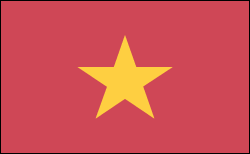Vietnam History


The Vietnamese are descendants of nomadic Mongols from China and migrants from Indonesia. According to mythology, the first ruler of Vietnam was Hung Vuong, who founded the nation in 2879 B.C. China ruled the nation then known as Nam Viet as a vassal state from 111 B.C. until the 15th century, an era of nationalistic expansion, when Cambodians were pushed out of the southern area of what is now Vietnam.
A century later, the Portuguese were the first Europeans to enter the area. France established its influence early in the 19th century, and within 80 years it conquered the three regions into which the country was then divided—Cochin-China in the south, Annam in the central region, and Tonkin in the north.
France first unified Vietnam in 1887, when a single governor-generalship was created, followed by the first physical links between north and south—a rail and road system. Even at the beginning of World War II, however, there were internal differences among the three regions. Japan took over military bases in Vietnam in 1940, and a pro-Vichy French administration remained until 1945. Veteran Communist leader Ho Chi Minh organized an independence movement known as the Vietminh to exploit the confusion surrounding France's weakened influence in the region. At the end of the war, Ho's followers seized Hanoi and declared a short-lived republic, which ended with the arrival of French forces in 1946.
Paris proposed a unified government within the French Union under the former Annamite emperor, Bao Dai. Cochin-China and Annam accepted the proposal, and Bao Dai was proclaimed emperor of all Vietnam in 1949. Ho and the Vietminh withheld support, and the revolution in China gave them the outside help needed for a war of resistance against French and Vietnamese troops armed largely by a United States worried about cold war Communist expansion.







